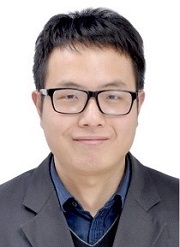
Dr. Wei Huang
SINOMACH Research Center of Engineering Vibration Control Technology, China
Title: A proposed recursive TCN-GRU for the time-series forecast of engineering vibration
Abstract:
In the field of engineering, vibration significantly impacts the safe and stable operation of engineering structures and equipment (for instance, rotating generator sets, ultra-precision manufacturing engineering, and coupled systems of building structures and equipment in industrial over-storey constructions and so on). Thus, achieving accurate engineering vibration forecast is of great significance. Traditional forecast methods have limitations when dealing with complex vibration data and struggle to meet practical requirements. In this study, a recursive TCN - GRU model is proposed. This model innovatively integrates the advantages of the Temporal Convolutional Network (TCN) and the Gated Recurrent Unit (GRU). It constructs multiple TCN convolutional blocks with causal convolution, layer normalization, Dropout, and residual connections, and combines with the GRU to explore the temporal dependence among features. Meanwhile, the hyperparameters of the model are optimized, and the Adam optimization algorithm, learning rate adjustment strategy, and L2 regularization technique are employed to enhance the model's training efficiency and generalization ability.
Regarding forecast characteristics, there are significant differences between the proposed model and traditional forecast methods. Traditional methods output values for known data points in the test set, mainly focusing on evaluating the model's accuracy on the given data. Their forecast method is one - shot, directly giving forecast based on known inputs without dynamic update feedback. In contrast, the recursive TCN - GRU model in this study emphasizes learning from historical data and predicting future unobserved vibration conditions. This requires the model to have high accuracy, strong generalization ability, and the capacity to handle uncertainties. By using the recursive method, each forecast result is incorporated as part of the new input, continuously updating the input to advance the forecast, which is more in line with the dynamic change characteristics of vibration.
Numerical experiments validate the model across three typical scenarios: MRD output force forecasting, where it achieves 37% lower RMSE growth and 0.982 R², outperforming GRU/LSTM by 29.3% in error reduction, multi-source ground vibration prediction, reducing MAE by 19.7% and micro-vibration active control, demonstrating 34% lower RMSE during long-range forecasting. The model extends the maximum effective prediction horizon by leveraging dilated convolutions and sliding-window recalibration, establishing a robust framework for engineering vibration forecasting with quantifiable performance improvements over state-of-the-art methods. The method uniquely integrates a recursive forecasting mechanism with TCN-GRU, dynamically updating inputs with prediction results to extend the effective prediction horizon beyond traditional approaches.
Biography:
Dr. Wei Huang is a professor-level senior engineer, and licensed structural engineer, and he serves as Deputy Director of the SINOMACH Research Center of Engineering Vibration Control Technology. He specializes in interdisciplinary research on artificial intelligence and engineering vibration/noise control, as well as strong/micro-vibration control technologies for heavy equipment, power machine foundations, precision engineering, building structure vibration isolation, and large scientific engineering projects, with research also covering secondary radiation noise control. He has been the Principal Investigator of 1 project funded by the Military Science and Technology Commission, 1 key project under the SINOMACH Youth Fund, 1 project under the SINOMACH Research Institute Youth Fund, and 4 additional research projects, while serving as Executive Leader of 2 major technical development projects of SINOMACH Group and participating in 2 National Key R&D Program projects. As a core contributor and chief compiler, he has participated in the formulation of 7 national standards and 6 association standards, and is the lead drafter of General Code for Engineering Vibration Control, China’s only full-text mandatory national standard in the field of engineering vibration. He has published over 40 papers as the first author in SCI/EI-indexed and core journals, and is the author/editor of 6 academic works. He holds 27 authorized invention patents, 6 utility model patents, and 6 software copyrights. His achievements have won the First Prize of Science and Technology Progress of China Metallurgical Group, the Third Prize of Mechanical Industry Science and Technology Award, the Special Prize for Innovative Construction Technology, the Second Prize of Excellent Patent of SINOMACH Group, and the "Outstanding Young Talent" in China Engineering Construction Standardization. In terms of professional appointments, he is Deputy Secretary-General of the Building Vibration Professional Committee of the China Engineering Construction Standardization Association, a member of the Cultural Relic Building Protection Branch of the China Engineering Construction Standardization Association, a member of the Vibration and Noise Control Committee of the Chinese Vibration Engineering Society, a member of the Architectural Acoustics Committee of the Chinese Acoustical Society, a member of the Human-Computer Engineering Committee of the Chinese Ergonomics Society, a member of the China Association for Disaster Prevention, and an expert member of the Building Environment Technology Committee of the China International Association for Science and Technology Promotion. He also serves as an Editorial Board Member of Acoustics and Vibration, a Young Editorial Board Member of Engineering Science and Technology (EI) and Journal of Artillery Launch & Control, and a reviewer for Journal of Sound and Vibration (SCI), Journal of Vibration, Measurement & Diagnosis (EI), Acta Armamentarii (EI), and Noise and Vibration Control.